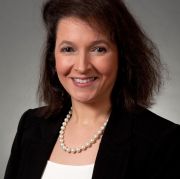The beginning of the COVID-19 surge indicated that we could not safely see our pediatric patients in the office. But patients still needed us either for sick visits, issues related to population health, or reassurance. We could not abandon them. Within the scope of 24-48 hours, we as clinicians were training ourselves on how to teach patients how to connect to MyChart, and use Zoom for telemedicine. At the same time, we were learning how to conduct histories and physicals using telemedicine. Our neuronal connections likely grew exponentially! Soon, we found ways to educate the younger generation, to bring them along this adventure into uncharted territories full of seemingly unsurmountable difficulties which we soon learned to overcome.
I still remember the joy I felt when I saw my first patient using telemedicine. He was having an asthma exacerbation and really needed guidance. As I was trying to find articles on the history of medicine to see how they listened to heart and lungs sounds prior to the advent of the stethoscope, the mom quickly told me she was studying to become a medical assistant and had a stethoscope. Listening first to her normal lung sounds, she then identified the lungs sounds in her child. The use of telemedicine was a source of immense gratification. And this gratification and joy continue to grow as I started teaching the younger generation.
The use of telemedicine and virtual meetings facilitated my teaching of medical students. My students’ experience of COVID-19 and patient care using telemedicine was unique and unrepeatable. The experiential knowledge they acquired will stay with them throughout their entire medical career. They also saw firsthand the hurdles experienced when a provider is trying to implement telemedicine with patients from diverse backgrounds. Health and computer literacy were not equal among all patients and this was one of the major hurdles we have had to overcome. In addition to the usual pediatric visits, we conducted a large number of visits to address population health topics such as pediatric obesity and asthma. We also conducted a large number of behavioral health appointments. In addition, I started conducting the TEEEN® (Teens, empowerment, education, exercise, nutrition) program virtually. This is a program I founded in 2003 that incorporates group sessions, social cognitive and modeling theories, parental involvement and medical students as role models, to address pediatric obesity in a non-clinical setting.
I also utilized an innovative approach for the “Medical Interest Group” another educational project I have led for many years. It is a monthly gathering for high school girls who are interested in pursuing a medical career. The group offers them a taste of what medical school is all about. Starting April 2020, we changed to a virtual format which allowed us to deliver the message to a national audience. Since June, we have conducted hybrid gatherings. The first segment includes case presentations from various specialties. Using the flipped-classroom method, each student is assigned a specific question to ponder regarding the case and a particular topic to read on. They are then called upon to answer questions regarding the case and to present topics they have read about. The next segment is the physical diagnosis curriculum during which they learn how to use medical tools. We discuss biochemical and anatomical topics related to the tool we are presenting. An example of includes discussing the biochemistry of anti-hypertensive medications and the anatomy of the heart when describing how to use the blood pressure cuff. This segment is followed by an art workshop during which the learn the importance of developing good observational skills. Other topics we aim to present include: history of medicine, music therapy, and health disparities and social determinants of health.
We plan to continue these innovations – telemedicine for our patients incorporating our students, technology to deliver group sessions, and virtual tools to educate the next generation - as they provide many advantages to patients, parents, students, and providers. I look forward to what the future may hold especially as I learn to incorporate technological tools and use virtual platforms to display assignments, quizzes, surveys and communicate with students. In the future, I hope to learn how to combine humor, as well as quotes from literature, movies and philosophy into my teaching sessions and gain confidence doing this in order to be a more engaging and impactful educator.
May we all continue to persevere, learn, and grow during this time! What have you learned through the COVID-19 pandemic? Comment below to join the conversation.
Did you know that the Harvard Macy Institute Community Blog has had more than 255 posts? Previous blog posts have explored topics including going back to basics with the Plus/Delta, leadership and change during the COVID-19 pandemic, and social distance without social isolation.
Shirley Gonzalez, MD, FAAP, Diplomate of the American Board of Obesity Medicine

Shirley González, MD, (Educators, ’20) is a medical educator, pediatrician and obesity medicine specialist. Shirley currently holds a position as Assistant Clinical Professor at Tufts, Lecturer at Harvard Medical School, and Pediatrician at Newton Pediatrics. Shirley’s areas of professional interest include innovative approaches to pediatric obesity, menstrual disturbances in adolescents, and mentoring future medical professionals. Shirley can be followed on LinkedIn or contacted via email.

